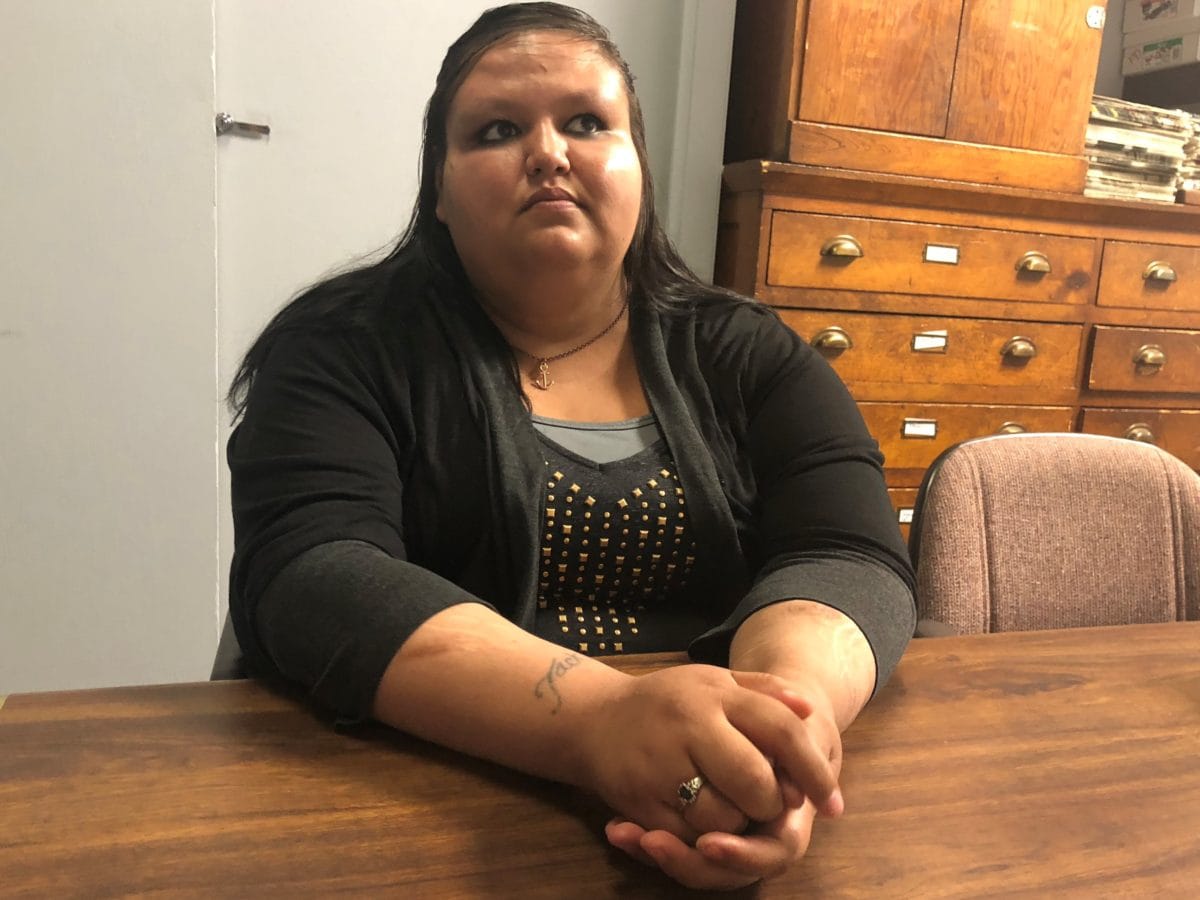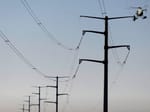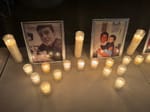PLANKINTON, S.D. – Youths and young adults housed at the Aurora Plains Academy in Plankinton have endured physical, mental and sexual abuse by employees amid an internal culture of secrecy and limited state government oversight, according to public documents and testimony from former residents and employees of the facility.
A six-month investigation by South Dakota News Watch has revealed a pattern of improper treatment of residents of the intensive youth treatment facility over the past decade that resulted in a variety of physical injuries and emotional trauma. In its review, News Watch conducted a dozen on-the-record interviews with former employees, residents and parents, examined independent reports on youth injuries and obtained complaint and inspection information from the state Department of Social Services.
Aurora Plains Academy is a privately run, government-funded institution that provides housing, treatment and education of residents ages 10 to 20, male and female, who have shown evidence of anger issues, self-harm or sexual deviancy. Residents, most of whom have not been convicted of a crime, are generally sent to the academy unwillingly by officials of the state corrections department, school districts and tribal agencies. The locked facility is owned by Wisconsin-based Clinicare Corp., a for-profit firm that operates four youth treatment centers in Wisconsin, Minnesota and South Dakota.
The News Watch investigation has shown that:
- Some employees of the facility regularly use harsh physical restraints on residents, resulting in facial rug burns, black eyes, bloody noses, bruising and injured limbs. Though employees are supposed to restrain residents only when the residents are a danger to themselves or others, former residents and employees say some employees goad, deride or bully residents into acting out and then take them to the ground from a standing position, sometimes face-first onto carpet or concrete, simply for misbehaving or not following commands. Many incidents are not documented and injuries sometimes go untreated or are addressed only days later. Residents are often blamed by staff for causing their own injuries.
- Residents are sometimes over-medicated and become zombie-like; one girl said she was put on 19 medications and others say medications are frequently prescribed and then changed with little diagnosis. Parents say their children’s personalities were adversely affected by over-medication at the academy.
- Girls who have stayed at Aurora Plains say employees have touched them sexually, and one former resident said an employee would pinch her breasts and cause bruising during physical restraints.
- Friendships and relationships among management and employees have created a culture of protectionism in which violent employees go unpunished, employees who protest are ostracized or fired, and many resident complaints are downplayed or not believed.
- Staff turnover at the academy is high, with employees paid low wages, forced to work long hours and subjected to resident-to-staff ratios as high as 12 to one.
- State oversight of the facility is limited. State DSS workers rarely investigate complaints of abuse or neglect. In addition, Aurora Plains is subject to only one pre-announced inspection each year by a Child Protective Services specialist within DSS. Records that describe complaints of child abuse or neglect are not available to the public, preventing the news media and taxpayers from knowing what is happening inside the academy.
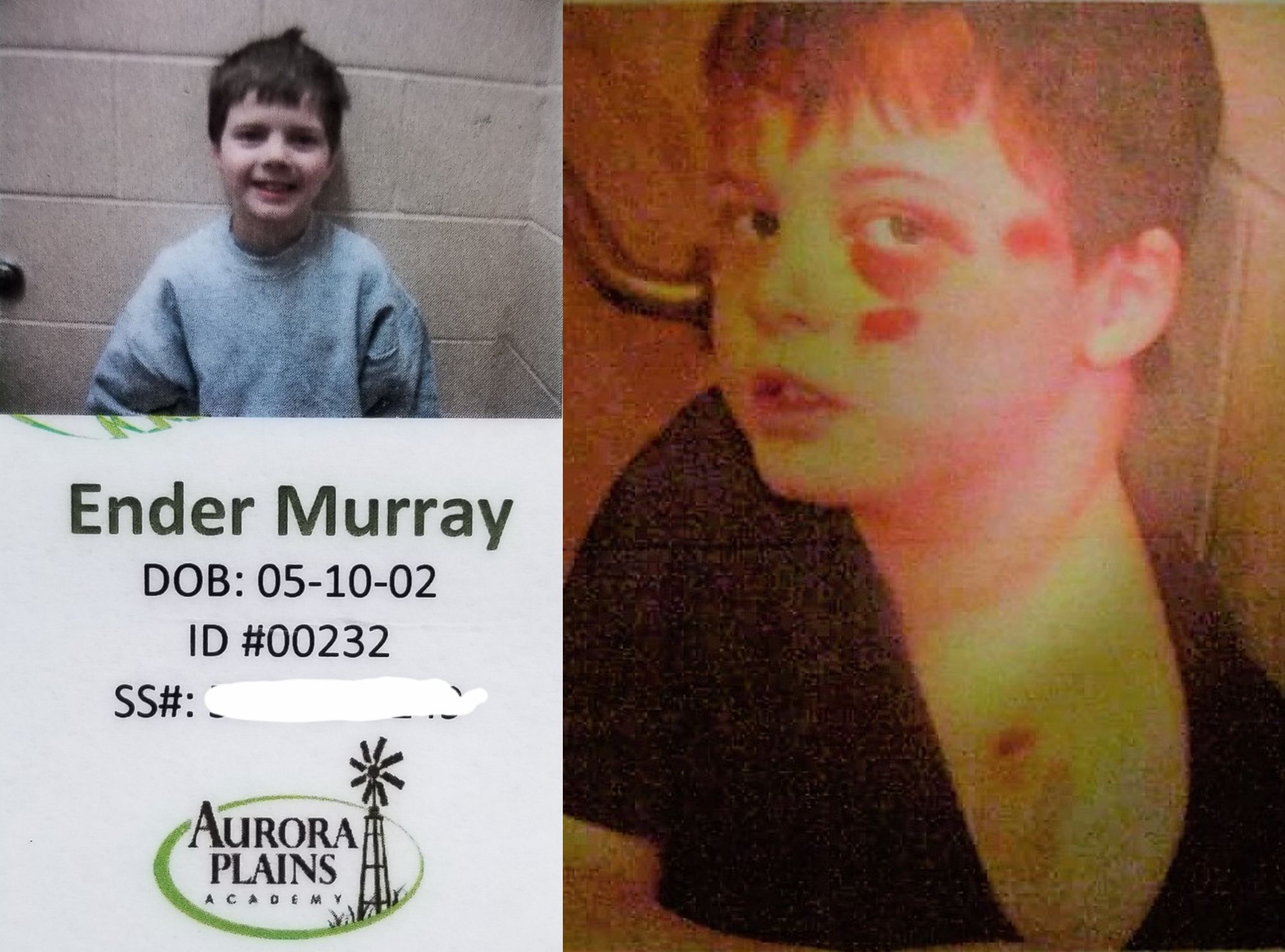
David Fritsch, president of Clinicare Corp., was provided a list of News Watch findings but declined an interview request, citing privacy laws and confidentiality of residents. In an email statement, Fritsch wrote that Aurora Plains is fully accredited and “committed to providing attentive, quality care that leads to positive outcomes for our residents.”
Fritsch wrote that the company follows all state laws regarding the reporting of incidents involving injuries and that reports are also sent to the company headquarters “for review by management including a compliance officer to ensure all actions are in compliance with state and company training and requirements.”
Officials with the state Department of Social Services, which oversees Aurora Plains and other adult and child in-patient facilities in South Dakota, declined requests to discuss specifics of complaints or allegations of abuse. Tia Kafka, spokeswoman for DSS, declined to make any DSS officials available for an interview with News Watch, accepting questions only in writing. A written request to interview the director of DSS or any top agency official was denied.
Gov. Kristi Noem was presented with News Watch’s findings but denied a request for an interview. Instead, the governor provided News Watch with a written statement via email indicating that she will review the full findings when published and is willing to propose legislative action if necessary.
“The health and safety of our children is one of the most important tasks we have as a society. As a governor, who is also a mom, I take credible allegations very seriously when it involves children,” Noem wrote.
“Incidents involving children at licensed facilities are reported to DSS and reviewed to determine what action will be taken. If changes in that system of checks and balances between the state agencies and private facilities are needed, we need to implement them. If the system isn’t working as it should, I want to know about it so we can fix it.”
In the email, Noem highlighted the state’s rapid response to the recent disappearance of 9-year-old Serenity Dennard, a resident of the Black Hills Children’s Home, a residential youth treatment facility in Rockerville run by the Children’s Home Society. Dennard walked away from the facility in February, has not been found and is presumed dead by authorities, who continue to search for her. In the wake of the walkaway, the state cited the facility for inadequate emergency-response procedures, among other issues, which Noem said have since been fixed. Noem said the rapid investigation and corrective actions required of the facility are an example of how state oversight can work to correct child-safety issues that come to light.
In a roughly 10-year period from July 2009 to March 2019, a total of 400 complaints of child abuse or neglect were filed against Aurora Plains to the state by residents, academy employees or people outside the academy, according to data obtained by News Watch through a public-records request.
In an email to News Watch, a representative of Clinicare said that 250 of the complaints filed to the state came directly from the facility, and that 100 of those incidents occurred before youths became residents. Phill Trewyn, a spokesperson for Clinicare, wrote in an email that Aurora Plains leaders “identified less than 10 reports that involved injury as a result of staff action such as a restraint hold. And in those cases, it is important to understand that injury sometimes occurs even when a hold is properly executed.”
The state was unable to confirm Trewyn’s data or the claims that abuse or neglect complaints were made before youths entered the facility.
Of the 400 complaints to the state, only 39 were formally investigated by the state. During the past decade, the state issued four corrective-action plans after investigations uncovered problems at the academy. Three of those corrective plans focused on inappropriate physical treatment of academy residents. One plan indicated that residents were physically restrained by academy employees an average of 150 times a month over a three-month period at the 66-bed facility.
It is difficult for the public to know exactly what occurs within licensed youth facilities overseen by the state of South Dakota.
Complaints of child abuse or neglect are confidential and not open to public view in South Dakota, though the number of complaints filed over a 10-year period was provided to News Watch after a public-records request.
Aurora Plains was the subject of about a third – 400 of 1,298 – of the abuse and neglect complaints filed over the past decade against the 20 youth residential treatment centers, group care centers and emergency shelters licensed in South Dakota, according to DSS data.
Complaints against Aurora Plains during that period peaked at 143 in fiscal 2010 and have fallen annually since then; 27 complaints were filed between July 1, 2018 to March 3, 2019, according to DSS.
After a separate records request, a lawyer from DSS provided News Watch with site-inspection and licensing-review records for Aurora Plains for the past 10 years. The inspections generally indicated few if any structural or administrative problems with the academy.
Interviews of those with first-hand experience with Aurora Plains reveal striking patterns in their description of life inside the academy. While some former residents and employees tell of staff members who care deeply about residents and try to protect, treat and educate them, there are other tales of dangerous physical restraints, unwarranted restraints, emotional abuse and bullying by staff, and a failure of management to protect residents from overly aggressive employees.
“There’s a few people that are there for the paycheck and they have a short fuse,” said Thai Le, who worked at Aurora Plains for five years before leaving in 2018 for a job at another South Dakota youth treatment facility. “They use more force than necessary during restraints and it gets messed up, with some staff doing things more out of anger than for the benefit of the kids.”
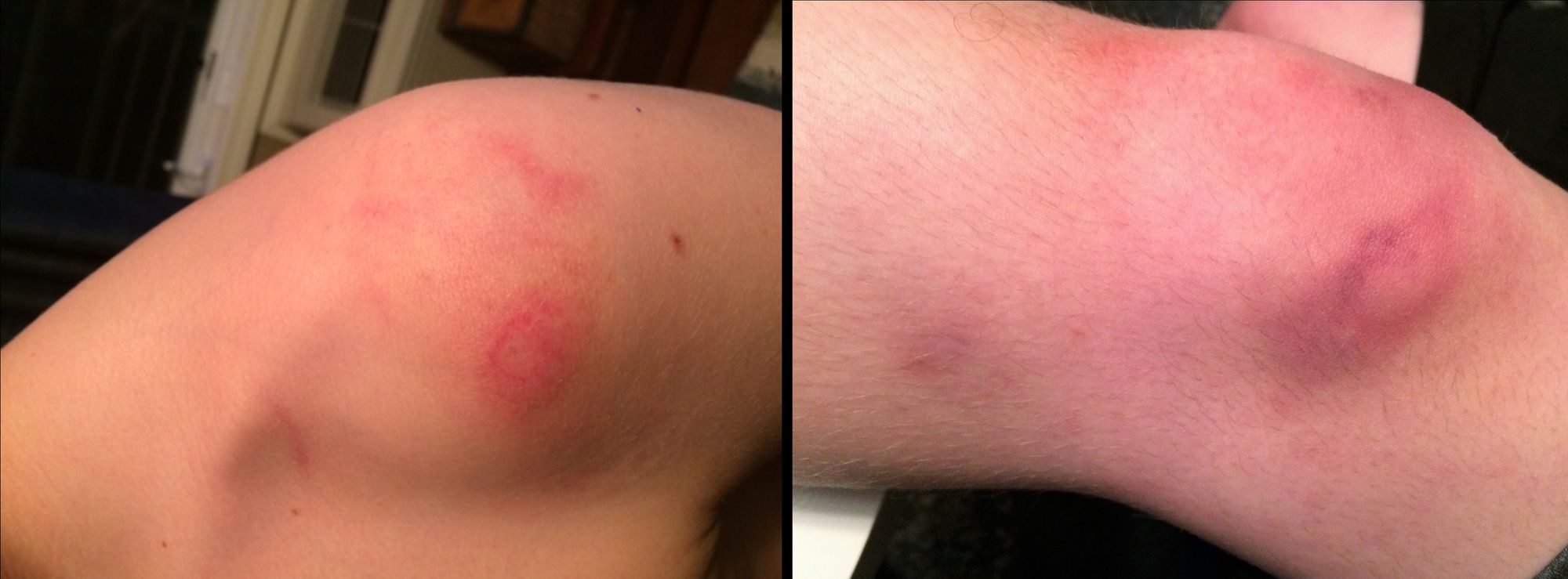
According to former residents and staff at the academy, many incidents of violence go unreported or are not investigated by the academy or the state, and treatment of injuries is sometimes delayed in order to shield employees who were abusive.
Former resident Kevin Gerber of Redfield said he once had a temper tantrum and was pushing open random doors inside the academy. When he pushed open an outside door and stood in the doorway, “I got tackled from behind and went face-first into the concrete,” recalled Gerber, now 22, who spent more than a year at the academy in the late 2010s. “I had scratches all over my face and it hurt a lot because the sidewalk was crumbly rock.”
Gerber, who also was ridiculed by staff for having bad acne, said he never received treatment for his injuries suffered during that restraint or others in which he was physically injured.
“When they restrain you, they don’t care what happens to you,” he said. “They want to stop you at all costs, like you committed a murder or something.”
State licensing requirements under the “Protection of Residents” subsection state that “each resident has the right to be free from restraint or seclusion, of any form, used as a means of coercion, discipline, convenience or retaliation.”
Yet former residents and staff told News Watch that some academy staff routinely use restraints, physical force or seclusion to punish or hurt residents who upset them.
“They will taunt you just to stir up trouble,” said LaDawn Bruguier, now 23, of Yankton, who spent two years in the academy starting when she was 14. “They want a response so they can use excessive force. They put us in holds for any little thing we did that they thought was not OK.”
‘Bruises all over his body’
Lauren Schroeder rushed to get her son out of Aurora Plains in 2015 because she felt that something wasn’t right with the boy’s treatment.
She had called the academy to speak to her 12-year-old son, whom she had voluntarily placed at the in-patient campus, but was told he couldn’t come to the phone because he was being held in isolation. To Schroeder, that was even more worrisome than typical phone calls in which an academy employee would stand next to her son and monitor what he told his mother.
The next day, after a tense exit meeting in which Schroeder said she was berated by academy staff, she checked her son out of the facility (News Watch is not naming the boy to protect his privacy.) They went to a gas station to get a hot dog and the boy asked to change his shirt, which Schroeder noticed was stained. As Schroeder watched, her son pulled up his shirt to reveal obvious injuries both new and partially healed.
“He took off his shirt and he had fresh rug burns on both sides of his collarbone, and he had bruises all over his body,” Schroeder recalled. “I asked him, ‘How did this happen?’”
Schroeder’s son told his mother that during only five months at the academy, employees had thrown him face-first into a wall, tackled him to the floor, squeezed him so hard he couldn’t breathe and pummeled his legs with elbow punches.
The injuries were documented in a forensic examination conducted a few days later by an investigator with Child’s Voice, a child medical-evaluation center within Sanford Children’s Hospital in Sioux Falls. Schroeder’s doctor advised her to have the boy independently examined.
The boy told the investigator that he was often put in illegal restraints by three Aurora Plains employees, according to a report on the exam. The boy testified that after misbehaving, one employee took him violently to the ground and elbowed him in the legs and stopped only when the clinical director walked in. On a separate occasion, the boy said, a different employee had taken him to the ground and lay on him, preventing him from breathing and nearly causing him to pass out.
The physical exam of the boy “revealed a large bruise by his right shin and a red, scabbed over area on his left shoulder,” the Child’s Voice investigator wrote in a confidential forensic report obtained by News Watch. “Injuries are consistent with his disclosure of being elbowed in the leg and being placed in a hold while on the floor.”
Schroeder said she contacted local law enforcement, the Aurora County State’s Attorneys Office and state child-protection officials and hired a private investigator, but that no one was ever held accountable for her son’s treatment.
In the interview with the Child’s Voice investigator, Schroeder’s son reported that an academy nurse knew about his injuries but asked him only “if he knew why he had been in holds” and did not provide treatment.
The boy also said that one academy employee, who had once bloodied his nose by throwing him into a wall, told him “not to tell anyone about the holds or he would take him to the reflection room,” where residents are held in isolation.
Child’s Voice is a nationally accredited medical child-advocacy center within Sanford Health where medical professionals perform physical examinations and forensic interviews with children who may have been victims of child abuse or neglect, according to Stacy Weller, director of the center.
Final reports are provided to law enforcement and other agencies, and the group’s findings can be used as evidence in court, Weller said. The center examines about 1,300 children per year, mainly from Minnehaha County and the surrounding area, she said.
“Questions are non-leading; they’re really just asking kids [to] tell us what happened, where did it happen, how did it happen,” she said. “We want kids to know that this is a safe place for them to talk, that we’re here to support them in a safe place.”
Weller said she was not able to discuss any individual complaints or cases and could not comment on whether Aurora Plains was a source of abuse claims beyond the one filed by Schroeder.
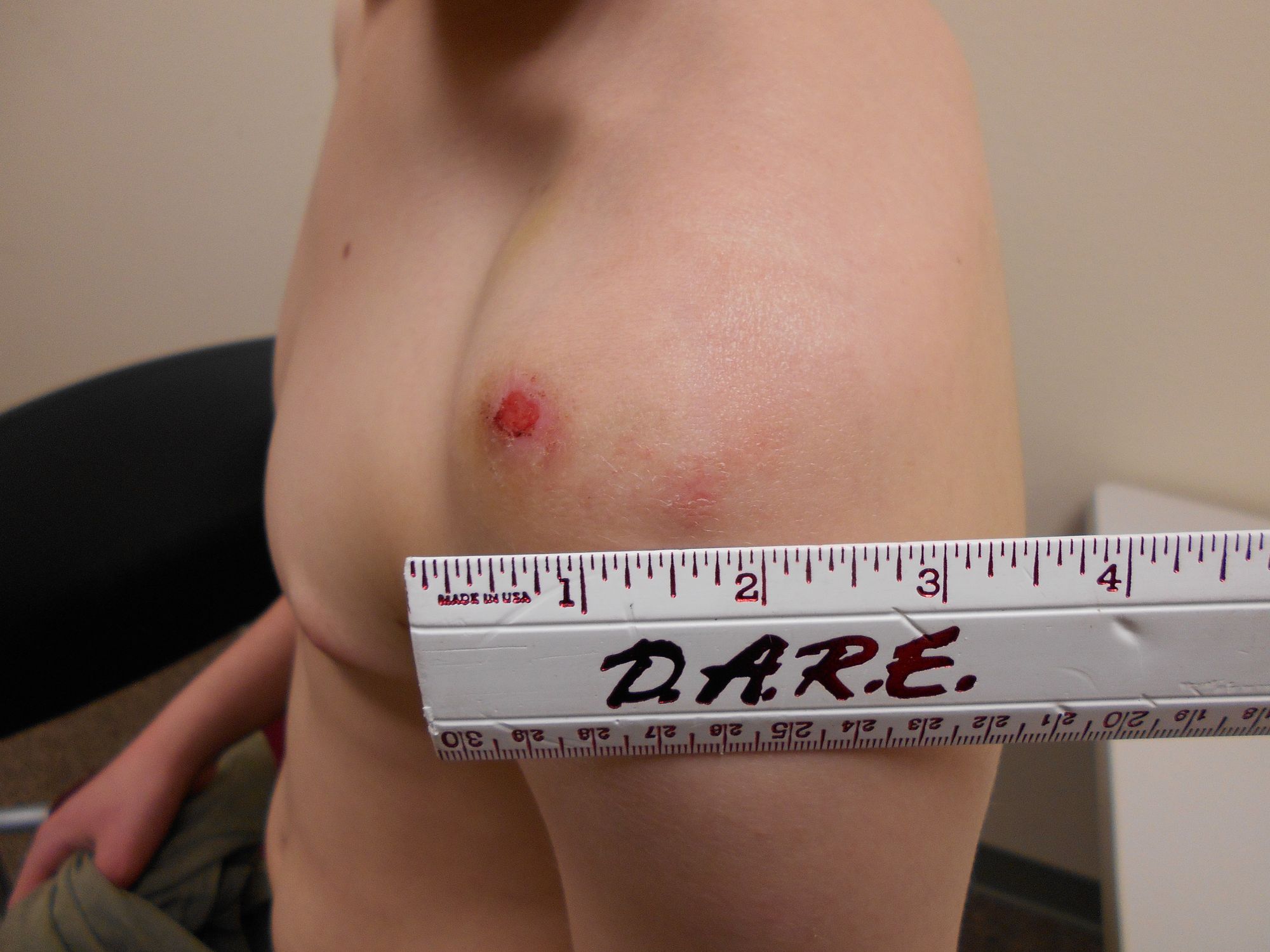
Schroeder also took her son to the Aberdeen Police Department, where an officer took photos of the boy’s injuries and detailed his findings in an April 17, 2015 report. “I took several photos of bruising on [the boy’s] shoulders, arms, knees, shins and hands,” officer Curtis Kline wrote. “Most of the bruises were purple and varied in size from dime-size on the arms to baseball-sized on his knees and shoulders.”
Schroeder, who has since been in contact with other parents of children who attended Aurora Plains, believes a culture of silence and protectionism is allowing abuses to continue unabated at the academy.
“I think there’s a lot of things happening there that are being covered up,” she said.
Schroeder has worked with other entities that have treated her son’s emotional issues, and she said none was as punitive or violent as Aurora Plains.
“They’re almost preparing these kids for a lifetime of imprisonment by putting them through the hell that they go through there,” she said. “It’s a cycle, a vicious cycle, and I feel horrible for the kids that are in there. It’s just sad and disgusting.”
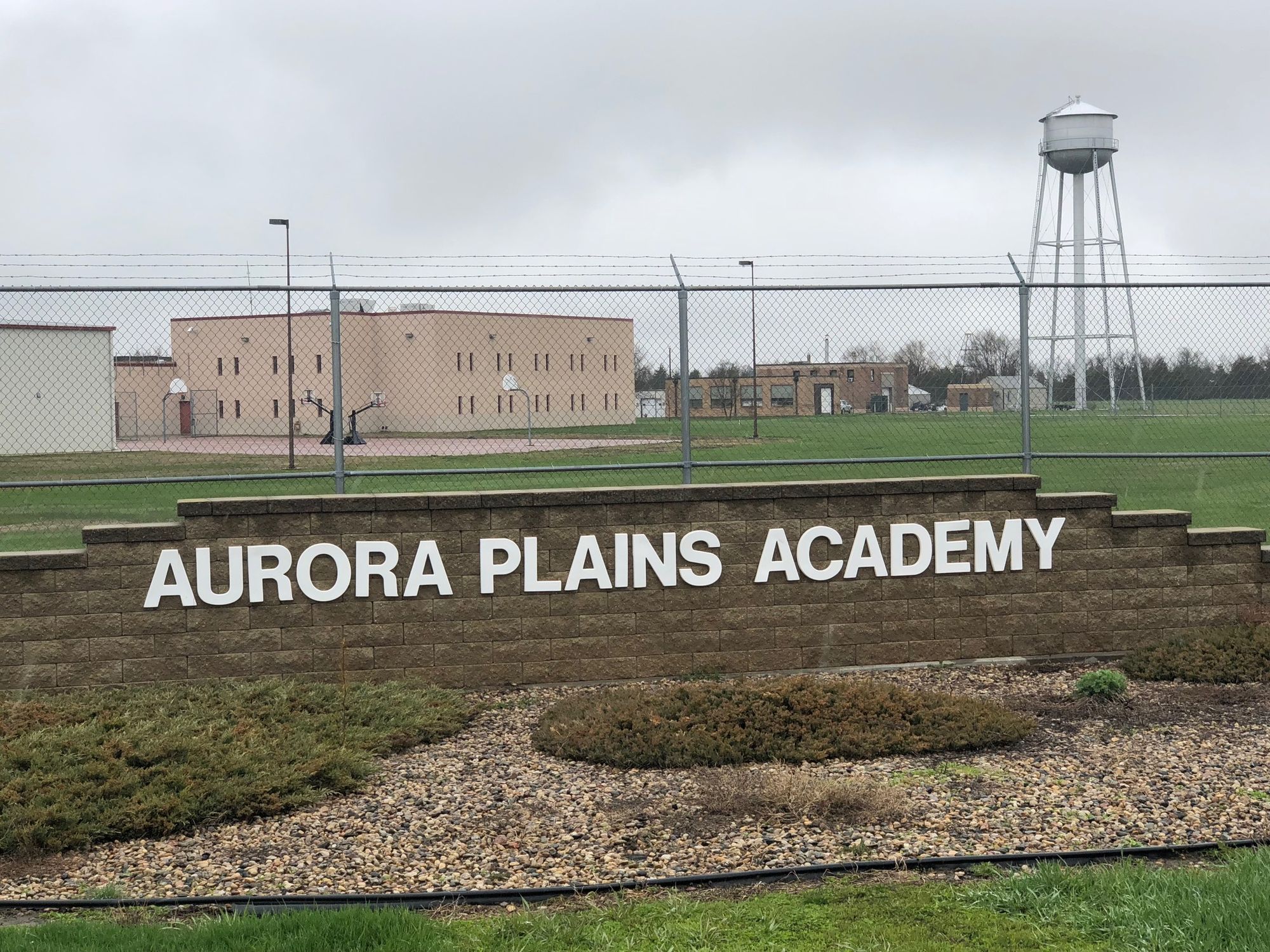
Same campus where Gina Score died
With its gray water tower, institutional structures and high chainlink fences topped by barbed wire, the Aurora Plains Academy cuts an imposing silhouette on the prairie just northeast of Plankinton about two miles north of Interstate 90. The site and structures were once known as the State Training School, which became infamous in South Dakota as the youth boot camp where 14-year-old Gina Score died in July 1999 when she collapsed after a forced run and was left to lie in the hot sun for hours before getting treatment. Score’s death led to a financial settlement and juvenile-justice reforms.
Over the years, the state has moved away from running intensive in-patient youth treatment facilities. Meanwhile, private for-profit firms and nonprofits have stepped in to run them.
According to Michael Winder, spokesman for the state Department of Corrections, the state closed the training school in 2001 and later leased it to the Cornell Companies for a few months in 2003. Clinicare began operating the academy in January 2007 and the state sold the facility to the company outright in October 2017, Winder said.
Aurora Plains is an intensive residential treatment center licensed to house 66 people ages 10 to 20, with 48 beds for males and 18 for females, according to the facility website. The site refers to its clientele as a special population “characterized by high levels of verbal, physical and sexual aggression.” A resident is eligible for treatment only after failing to respond to prior treatment or after being denied treatment elsewhere. The academy is regulated by the Division of Child Protection Services within the state DSS, which licenses group care centers and residential and intensive residential treatment centers.
Aurora Plains is mainly funded through the Medicaid program, with a combination of state and federal funds. In fiscal year 2018, the facility was paid $7.34 million in government funds, with $4.1 million in federal funds and $3.2 million in state funds, according to Kafka. The funding covers residents referred to Aurora Plains by Child Protective Services, but also those sent to the academy by other state agencies, parents, school districts and Native American tribes.
The facility, according to the website, treats 40 diagnosed conditions, including alcohol or drug abuse, anxiety, bipolar disorder, depression, disruptive behavior, gender-identity disorder, impulse control, mild mental retardation, obsessive-compulsive disorder, post-traumatic stress disorder, schizophrenia, problematic sexual behaviors, Tourette’s syndrome, victims of abuse and XXY chromosomal disorder.
Aurora Plains is one of 20 treatment centers overseen by the state DSS, which conducts one pre-announced inspection of the campuses each year, said Kafka of DSS.
When a compliance complaint is made, a state licensing-program specialist is assigned to work with the facility staff to make corrections. If an abuse or neglect complaint is made, the state makes a judgment on its veracity and may hire a contract investigator to review the case and then meet with facility officials to ensure any required corrective actions are taken, Kafka said.
The latest corrective-action plan filed by the state against Aurora Plains in March 2017 required the facility management to “improve restraints so they are safer for staff and residents.”
The investigator also recommended remedial training regarding improper restraining of residents for an academy employee whose name was redacted in the report released to News Watch.
“It is recommended that [redacted name] avoid all restraints if possible until management is satisfied with his ability to perform them at the appropriate level.”
That report on that incident also noted that the state investigators “expressed concerns with the length of time it took for Aurora Plains Academy to seek medical attention for the resident.”
A pair of corrective-action plans issued by the state in July 2012 and June 2013 also addressed the use of excessive force and inadequate reporting of incidents of child abuse or neglect by staff.
The June 2013 report revealed how often restraints are used by staff at Aurora Plains. In that report, one employee whose name is redacted is described as having a reputation that “he is rough and quick to restrain.”
The report states that the employee had conducted 25 physical restraints of residents, or 8 percent of the total at the facility, during a two-month period, meaning that about 312 restraints were used on residents of Aurora Plains during those two months. A later report confirmed that about 150 resident restraints, roughly five per day, occurred each month at the academy.
Both the 2012 and 2013 corrective-action reports indicate a need for the academy to better train employees to de-escalate situations, to reduce the need for violent restraints and to better document and review situations where force was used on residents.
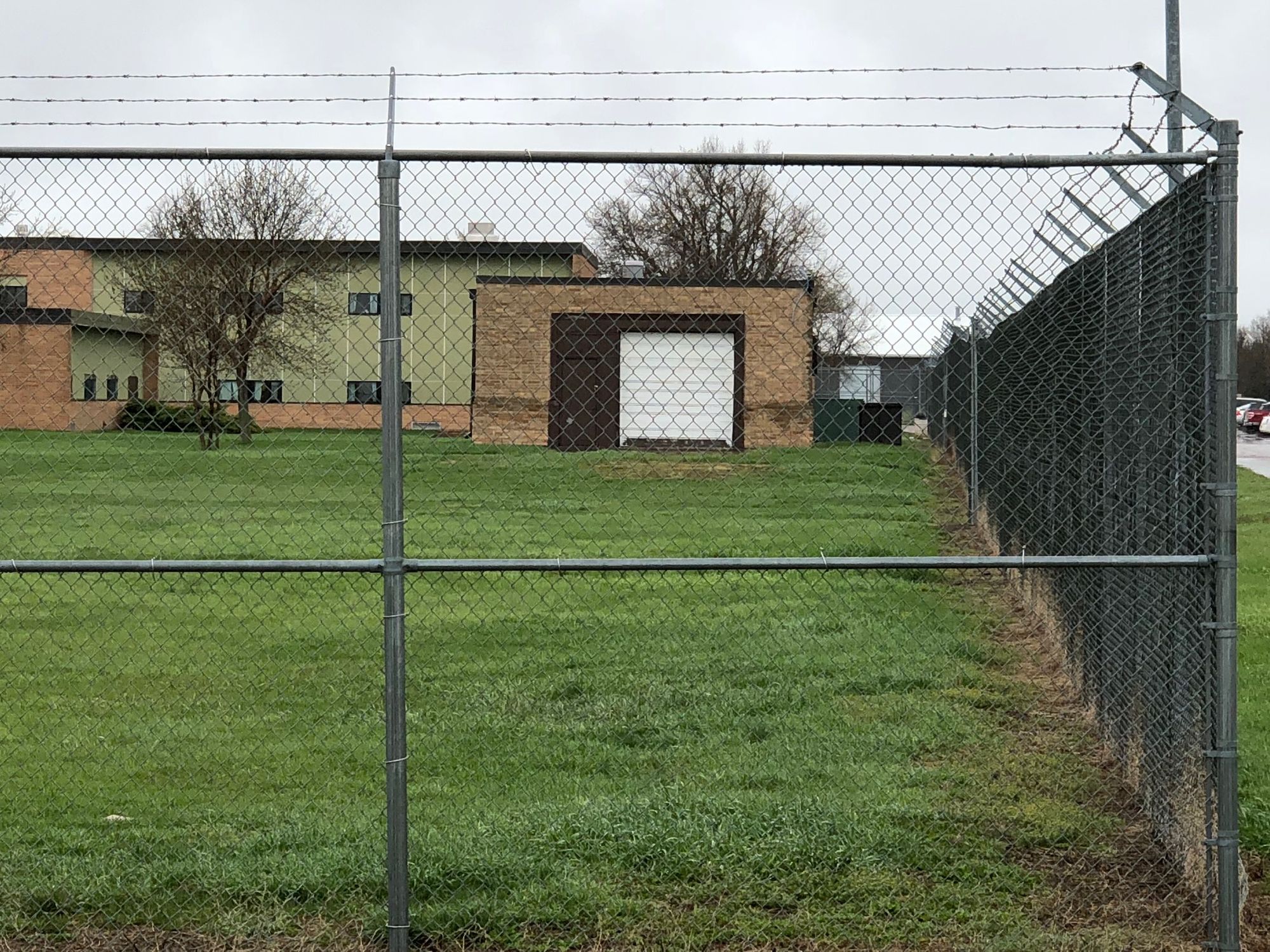
Criminal charge follows abuse
While former employees and residents of Aurora Plains say many violent restraints and physical injuries are either whitewashed by the staff involved or go completely unreported, the injuries suffered by 10-year-old Ender Murray resulted in a rare criminal charge. Ender and his mother have approved the use of his name and picture by News Watch.
According to a state investigative report, Ender was acting up on Feb. 16, 2013. The boy was first put into a physical restraint after jumping into a snowbank while being led to the cafeteria for lunch. Later, Ender admitted he was “whining and being a little turd” while medications were being handed out, and for that he was sent to “chair time” to calm down.
Ender told an investigator that he was banging on the arm of the chair and making a “cool beat” musical sound. The staff member monitoring Ender told the investigator that Ender was also shouting racial epithets and curse words and was agitating his peers by calling them names.
Emmanuel Yuyada, a therapeutic-support staff or TSS employee, showed up and told Ender to stop, but the boy did not comply.
Ender said that Yuyada then said, “That’s it,” and quickly threw him face-first onto the ground and mashed his body into the carpet. Ender suffered a black eye, a nose bleed and rug burns on his shoulder, knees and limbs. During the restraint, the investigative report notes, Ender cried out and wet himself.
Yuyada told the investigator that Ender intentionally banged his own head on the floor and kicked his legs to cause his injuries, which the boy denied.
The state investigator also interviewed TJ Stanfield, then clinical supervisor and now the director of the academy. Stanfield told the investigator that he had personally seen Ender get physically restrained about 30 times in the 18 months the boy was at the academy, sometimes for “breaking boundaries with his peers.”
Jeremy Pischke, then a therapist and now clinical director at the academy, told the investigator that Ender was manipulative and “knows how to push people’s buttons.” Pischke told the investigator that his understanding of why Ender was restrained was that he was pounding on the chair.
State guidelines, however, say that physical restraints should be used only when a resident is a danger to himself or herself or others, not for being disruptive or making noise.
Yuyada was charged with simple assault, but after a preliminary hearing, a judge dismissed the case due to a lack of criminal intent. He is no longer employed at the academy.
Emily Mitchell, Ender’s mother, said Aurora Plains employees changed their stories in court to soften the violence of Ender’s restraint, and she said the state investigative report was not admitted as evidence. Photos taken of Ender days after the incident show him with a swollen black eye, redness about his face and neck, and rug burns on his knee and legs.
“My son is a sweet boy, and when he’s nice, he’s really nice, and when he’s not nice, he’s not very nice,” she said. “But no matter how awful that boy behaves, it doesn’t justify what they did to him and how they covered it up.”
Mitchell believes her son’s time at Aurora Plains did him more harm than good. She recalls visiting him after two months and noticing that “his eyes were dead, his teeth were black and the boy in him had died. He was a zombie case.”
She said Ender was physically smaller than most other academy residents and was ruthlessly picked on and sometimes sexually abused by other residents of the facility while employees did nothing to help. She said her son was on numerous medications that made him dopey and withdrawn.
Mitchell’s consistent questioning of academy procedures and employee actions got the full attention of academy leadership. In October 2013, eight months after the violent restraint of Ender, Pischke filed a court affidavit urging the state to terminate Mitchell’s parental rights over her son.
“She has undermined his treatment by encouraging him to be ‘unique’ and question those in authority,” Pischke wrote of Mitchell. “Instead of trying to motivate him to be successful in his programming, Emily often questioned Ender about how staff was interacting with him and she would suggest it was staff and not Ender needing change.”
The petition to terminate parental rights failed. Despite requests for interviews, Clinicare officials declined to make Pischke or Stanfield available for interviews by News Watch.
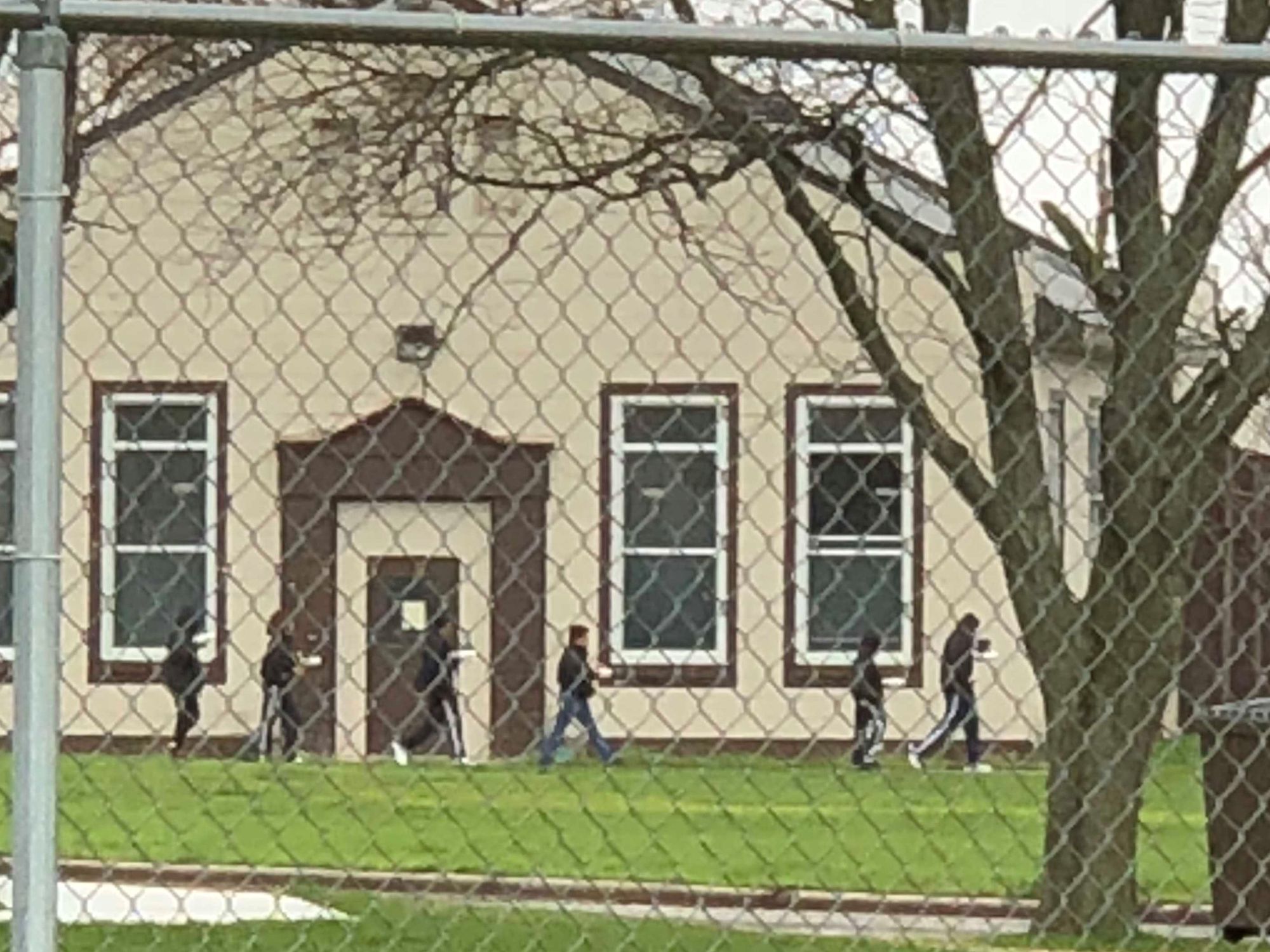
‘A sense of brutality’
Former employees of the academy say they are trained in the use of Jireh, a method of restraint that seeks to use the “least restrictive” methods possible to control someone. Under Jireh, the first response is to de-escalate through talk. If that’s unsuccessful, a restraint begins – involving holding back someone’s arms while in a standing position, then moving to a sitting position before eventually taking the person all the way to the ground if he or she continues to resist. Employees are supposed to make three determinations that a person in a restraint is actually resisting and not just reacting before moving to a stronger restraint position, employees said.
Former employees interviewed by News Watch said youths who fought or tried to hurt themselves or others were often justifiably and safely restrained until calm. They said that some employees, however, routinely took residents hard to the ground from a standing position for minor infractions such as talking out of turn, refusing to immediately obey commands or wising off to employees.
One academy TSS supervisor with a reputation for having a quick temper and for restraining needlessly and harshly was mentioned by name by several former staff members and residents interviewed by News Watch (the employee is not being named by News Watch because he has not been charged with a crime.)
Jessica Lee, who spent two years at the academy as a teen, said violence at the academy ticked upward when that same rough and easily angered employee was hired during her stay. “He would try to break my arm and pinch my boobs every time he had me in a restraint,” said Lee, now 24. “He would leave bruises on our boobs because he would pinch us so hard.”
Bruguier, a former resident, said during her time at Aurora Plains she was thrown face-first into a wall, body-slammed to the floor, put in a restraint for biting her nails, made to sleep without a blanket and taunted frequently by employees because she had a bad attitude.
“They would pull on my arms to the point I was screaming in pain,” Bruguier said. “I was getting so mad because they were egging me on, saying, ‘Your grandmother doesn’t want you, so we get to go home to our people and you don’t.’”
Charles Isaac, who worked at Aurora Plains for four years in the late 2000s, said most employees followed guidelines and tried to help residents. But Isaac said one employee would tell him to write and sign restraint reports even though Isaac wasn’t physically involved. That employee, the same one mentioned by former residents, would also tell Isaac to tweak or rewrite the reports to reduce the culpability of himself and other staff, Isaac said.
“[He] should have been writing the reports, but he didn’t so his name didn’t keep showing up time and time and time again,” Isaac said. “If you’re sorting records by the name of the person reporting, then yeah, his name will show up only a tenth of the times that it should.”
"I took several photos of bruising on [the boy's] shoulders, arms, knees, shins and hands. Most of the bruises were purple and varied in size from dime-size on the arms to baseball-sized on his knees and shoulders." – Aberdeen police officer Curtis Kline after reviewing injuries suffered by the son of Lauren Schroeder while at Aurora Plains Academy
Jeff Gortmaker, a youth-development specialist at the academy for about six years from 2005 to roughly 2011, said one academy employee in particular seemed to enjoy having power over residents and staff and was confident that his superiors would protect him from scrutiny.
“There were numerous internal investigations of his hard restraints, and the state has investigated him at different times,” Gortmaker said of the employee.
Isaac and other former employees said it was clear that some of their colleagues were spending time outside work with their superiors and that a “buddy-buddy” system exists at the academy. He and others said it was common knowledge that managers and non-managers hunted and fished together outside work.
“I would assume that if you’re buddy-buddy with someone and they do something bad that there will be some covering for them,” Isaac said.
Brittany Dozark of Sioux Falls spent two years as an employee of Aurora Plains and said major reforms are needed to improve therapeutic outcomes for residents but also to ensure their safety.
“I definitely think there’s a sense of brutality there,” said Dozark, who worked to counsel and aid residents at the academy. “There’s nothing that says to these kids that, ‘Hey, everything is going to be OK.’ It’s more like they messed up and they’re in ‘kids prison’ now, not a place to get therapy, treatment or help for mental conditions.”

